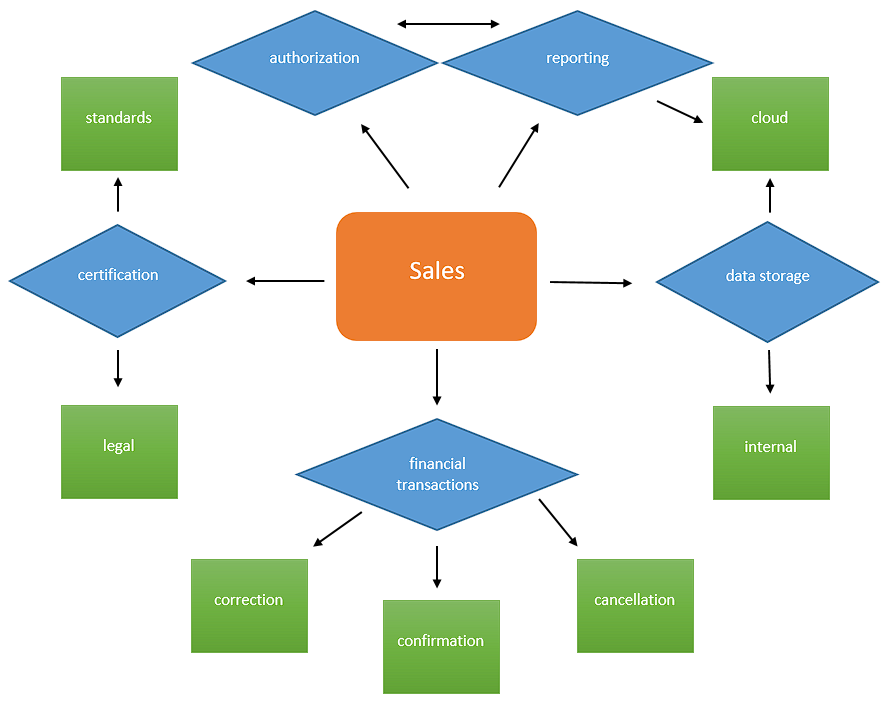It is important to note that the proposed solution for Petco is the Internet of Things or IoT, which requires big data intervention starting with data entry and master data gathering as well as the utilization of analytics. Since the overall emphasis will be put on the improvement of smoothness and quality of the performance itself, five major big data entries and one master data will be necessary. The business analytics will be produced on the basis of a specific machine learning instrument.
There will be a total of five big data entries that will be gathered. These include financial transactions, data storage, certification requirement compliance, employee authorization, and reporting. The master data needs to be relevant to track performance but additionally be connected to other data entries. Thus, the selected master data is product sales because it can be reflected as a financial transaction, can be stored as data, and needs to be authorized as well as reported. Petco’s products are sold in a traditional pricing format by ensuring the profitability of each item sold, which is why the revenue is a simple, but a reliable indicator of performance. The product cannot be sold without being compliant with certification requirements. A rudimentary entity relations diagram or ERD for the master data and big data entities can be accessed in Figure 1 below.
When it comes to the business value of big data and IoT, they can be combined to substantially improve the procedural flow at the company through a hermetic systematized environment. In other words, tracking, monitoring, and conducting a wide range of business operations accurately reflected in the Google cloud platform can provide a powerful data basis for potent business analytics with predictive capabilities (Ahn et al., 2019). Since Petco already heavily relies on the use of data and sells its products online, the value is significant (Foreman, 2019). The use will be manifested in unifying the majority of internal processes in a single Google cloud platform by interlinking the performance and sales through a network of interconnected data entries.

The goal is to achieve a predictive level of business analytics on the basis of key big data entries and adjustments with a continuous change in sales. The latter means that both descriptive and diagnostic levels will additionally be possible. In order to establish such a degree of business analytics, regression predictive modeling will be used. It is stated that “regression predictive modeling is the task of approximating a mapping function (f) from input variables (X) to a continuous output variable (y)” (Brownlee, 2017, para. 23). Therefore, the latter variable will be sales as reflective of performance or output, and the input variable will be the data entries. Since sales is an ongoing and continuous variable, the regression model might show more plausibility compared to the classification one for machine learning.
In conclusion, business analytics will identify the most critical determinant of performance as well as bottlenecks for the operational processes. In addition, it will have a predictive capacity to anticipate future changes in sales by assessing Petco’s internal capabilities. It will rely on five major big data entries, such as financial transactions, data storage, certification requirement compliance, employee authorization, and reporting. IoT will be implemented in the form of the Google cloud platform, and the analytics will utilize predictive regression modeling.
References
Ahn, S., Couture, S. V., Cuzzocrea, A., Dam, K., Grasso, G. M., Leung, C. K., McCormick, K. L., & Wodi, B. H. (2019). A fuzzy logic based machine learning tool for supporting big data business analytics in complex artificial intelligence environments.2019 IEEE International Conference on Fuzzy Systems (FUZZ-IEEE), 1, 1-6. Web.
Brownlee, J. (2017). Difference between classification and regression in machine learning.Machine Learning Mastery. Web.
Foreman, P. (2019). Vulnerability management (2nd ed.). Auerbach Publications.